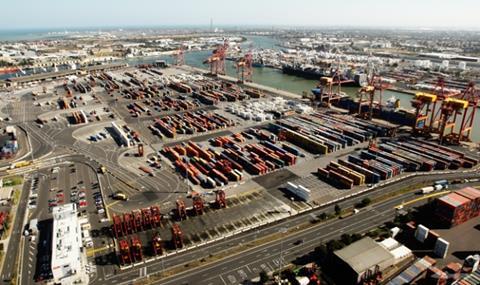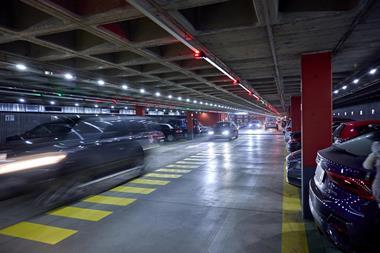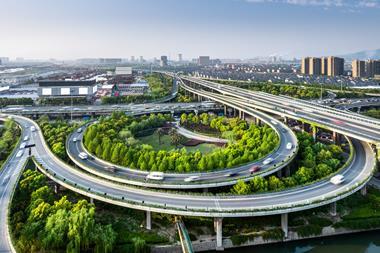Nicola Palmer explains how shipping poses a distinct set of challenges when it comes to energy transition

Shipping is one part of a large global supply chain. For us investment managers, it is a supply chain we need to ensure we understand and are supporting in the transition to net zero. Yet, the decarbonisation of shipping presents a distinct set of challenges.
It will require coordination across multiple players, including shipping lines, other marine services, port infrastructure and alternative fuels development and supply. As managers, we must understand the initiatives available to actively work with the industry to decarbonise.
Currently, more than 80% of global trade volume is carried by sea and it is estimated that the international shipping industry emits 940m tonnes of carbon annually. The International Maritime Organization has committed to reducing CO2 emissions globally by 20% by 2030 and 70% by 2040. In Europe, the targets are more ambitious, with a target of 55% by 2030.
While the EU has introduced several supporting initiatives to help achieve this goal, including a maritime emissions trading system, and many of the largest shipping businesses also have targets. As regulation increases on corporations in all sectors, there has been a significant increase in pressure placed on shipping majors by corporations seeking to reduce their Scope 3 footprint.
The problem is that, at present, the International Energy Agency (IEA) estimates that the shipping industry will only meet its reduction goals with significant changes.
Non-fuel decarbonisation measures
There are several non-fuel decarbonisation measures that, if rolled out widely, could be key to reaching short, medium and long-term targets and direct operational cost savings toward alternative fuel development. Slow steaming is already being applied to reduce fuel consumption by approximately 20%.
Automated mooring, which saves companies both emissions and time, is another example. It can take up to an hour to secure cargo ships under challenging conditions, but automated mooring could save an average of 30 minutes and mean ships use less fuel in the positioning and securing process. This technology is readily available, although there are a limited number of manufacturers in the market. Vessel hull and propeller design, or newer initiatives like wind funnels, are also promising advancements.
Another available, albeit limited, technology is electrification. Currently, the available technology is constrained to limited number of commercial applications – representing 0.2% of global tonnage. It provides performance on par with marine diesel while having the added benefit of being cheaper to run and maintain.
Alternative fuels
Unsurprisingly, the development and widespread adoption of alternative green fuels is recognised as the most likely long-term solution to reach net-zero status in the industry. This is a long-term prospect, likely only materially relevant for 2050 emissions targets due to the varying immaturity of alternative fuel technologies and the complexity of the global shipping ecosystem.
While there are shorter-term challenges, alternative fuels will ultimately catalyse progress on the path to decarbonisation. Methanol, biofuels, ammonia and hydrogen are all options being considered for decarbonisation over the medium and long term. Significant investment is being made to deliver commercially viable solutions and overcome challenges such as practical engine and onboard storage – for example, green hydrogen requires approximately eight times the storage space as diesel. Economic viability, scaled production coupled with sufficient inputs and supply chain and bunkering infrastructure, are also being addressed for the medium-to-longer term via investment.

And early progress is being made. For instance, the Port of Melbourne (PoM) in Australia recently entered a memorandum of understanding to explore the commercial feasibility of establishing a green methanol bunkering hub as a diesel alternative. This would facilitate the green refuelling of vessels directly at PoM as a major hub, noting refuelling is likely to be required more frequently with the lower energy density of most green fuels.
Despite this, 2030 emissions targets are more likely to be tackled using so-called ‘transitional fuels’, such as LNG. This technology is readily available and understood but less commonly used in shipping. It provides a 15-25% decrease in CO2 emissions but does, however, emit small amounts of methane. Commercially, it is half as energy-dense as traditional bunker fuel; however, if we look at the current mix of alternative-fuel ships on order, LNG-compatible ships dominate the order book during this transition phase.
So, where does all of this leave us? There are interim steps that major shipping organisations, ports and supporting infrastructure providers can make to reach 2030 decarbonisation milestones. These are inexpensive compared to the overhaul required for fuels, engines and fuel supply chains and can be achieved relatively quickly. However, in the long term, the path to decarbonise the maritime industry will require aligning efforts across parties, and investment managers must work with their assets to deliver long-term change.


















